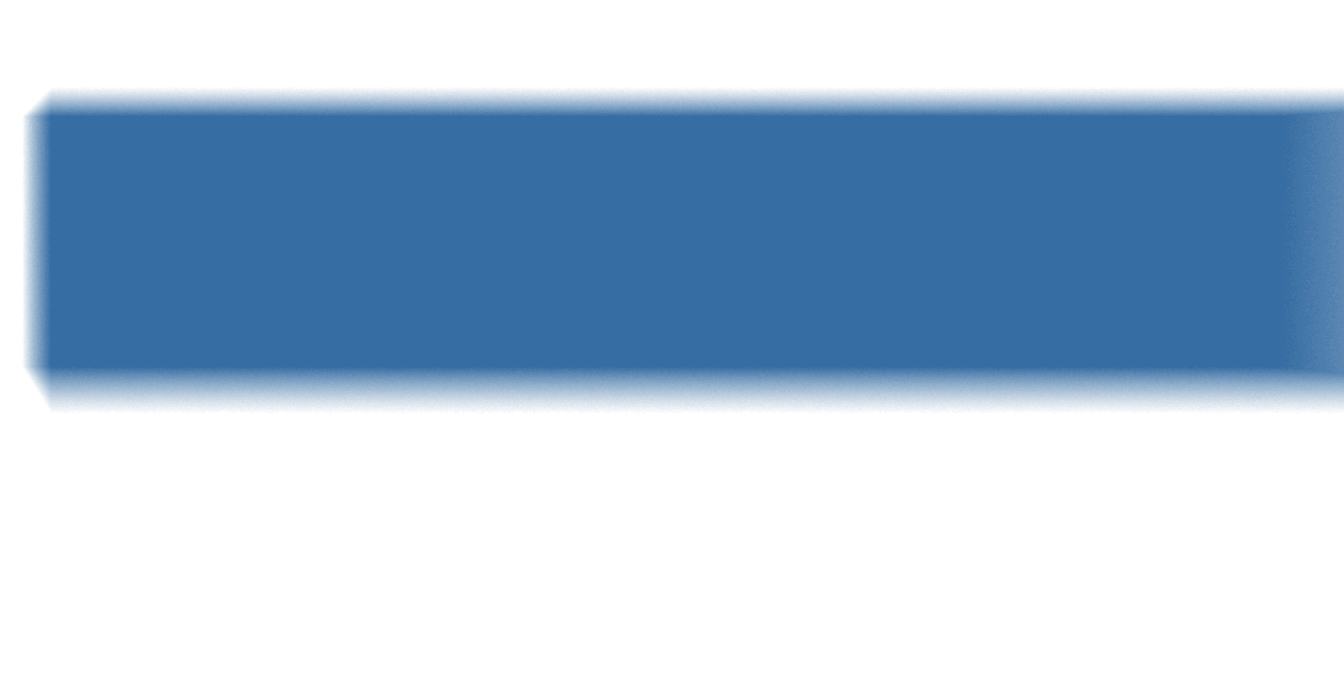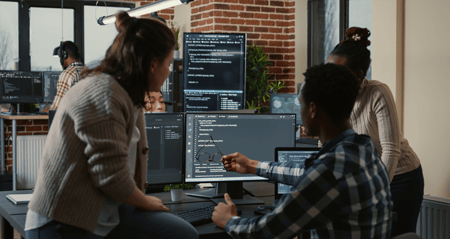


Continuous security monitoring is a cybersecurity necessity
You can stay one step ahead to protect your valuable assets despite rapidly evolving threats and hackers constantly finding new ways to breach networks through Continuous Security Monitoring (CSM). Continuous Security Monitoring is your answer to keeping a vigilant eye on your digital environment, detecting real-time risks, and responding quickly to potential threats.
This discussion explores what Continuous Security Monitoring is all about and why it plays a crucial role in your cybersecurity strategy.
What is continuous security monitoring?
Continuous Security Monitoring involves continuous observation of your IT infrastructure, networks, and systems to spot unusual activity, security threats, or vulnerabilities. Instead of periodic checks, think of Continuous Security Monitoring as having a security guard patrolling your digital premises 24/7. The goal is to catch problems early and often before they cause any damage.
CSM relies on advanced technology like Security Information and Event Management (SIEM), Endpoint Detection and Response (EDR), and threat intelligence feeds. With these tools, you can collect, analyze, and interpret data from across your network to identify and address threats quickly.
What are the benefits of continuous security monitoring?
The benefits of Continuous Security Monitoring are numerous and point toward a safer, more secure environment. Key reasons why you should consider adopting CSM include:
- Early threat detection: With CSM, you can catch threats as they happen, not days or weeks later. This gives you the advantage of stopping an attack before it escalates.
- Enhanced incident response: With real-time monitoring you can respond faster when a security incident occurs, minimizing the damage and reducing downtime.
- Proactive risk management: CSM helps you spot security gaps and vulnerabilities before they become serious issues. You can address these risks early on, making it harder for hackers to find a way into your environment.
- Compliance and regulation: Many industries have strict security requirements. CSM provides the continuous monitoring needed to meet these standards and prove compliance during audits.
- Real-Time visibility: CSM gives you real-time visibility into your security posture, enabling your team to watch and respond to security events as they happen. This live monitoring lets you detect threats early, make informed decisions quickly, and protect your critical assets from potential risks.
- Cost efficiency: Automating security tasks with CSM can save you time and resources. Your security team can focus on more complex issues while the monitoring tools handle the routine work.
How does continuous security monitoring work?
Continuous Security Monitoring works by constantly gathering data from various sources in your network. This data is then analyzed to detect anything out of the ordinary. If something looks suspicious—like an unusual spike in network traffic or an unauthorized access attempt—the system generates an alert for further investigation.
CSM typically works like this:
- Data collection: CSM tools collect data from multiple sources, including network devices, servers, endpoints, and cloud platforms. This comprehensive approach ensures nothing slips through the cracks.
- Advanced analytics: The data is analyzed using sophisticated algorithms and machine learning to identify patterns and detect anomalies. This allows for real-time threat detection and response.
- Alert generation: When a potential threat is detected, an alert is triggered. Security analysts can then triage and investigate the issue to determine the best course of action.
- Integrated approach: CSM integrates with other security tools, such as SIEM systems, EDR, and Intrusion Detection Systems (IDS), to create a holistic view of your security posture.
What common cybersecurity risks does continuous security monitoring identify?
Some of the most common risks CSM can detect include:
- Malware infections: CSM tools monitor endpoints and networks for signs of malware or suspicious behavior, helping you stop infections before they spread.
- Unauthorized access attempts: CSM tracks user activity and network traffic to identify unauthorized attempts to access sensitive data, such as brute force attacks or credential stuffing.
- Data breaches: By monitoring data flows and access patterns, CSM can detect anomalies that may indicate a data breach or unauthorized data exfiltration.
- Vulnerabilities and exploits: CSM continuously scans systems for known vulnerabilities, allowing you to prioritize patching and remediation.
- Configuration errors: Misconfigurations can create security risks. CSM identifies these errors, helping you fix them before they become a problem.
- Insider threats: CSM can detect suspicious user behavior that might indicate an insider threat, such as unusual file access or data exfiltration attempts.
- Security policy violations: CSM identifies deviations from established security policies, like unauthorized software installations or non-compliant access permissions, helping you stay compliant with regulatory requirements and industry standards.
What are security ratings and why are they important?
As you work to build a resilient cybersecurity posture, knowing how well your security measures stack up against best practices and industry standards is crucial. This is where security ratings matter. They provide a clear, objective view of your cybersecurity health, guiding you in making informed decisions to strengthen defenses.
Security ratings offer a quantitative assessment of your security posture, focusing on various aspects such as infrastructure, security controls, and compliance. Typically generated by specialized rating services, these scores rely on a mix of external data sources, threat intelligence, and proprietary algorithms. The result is a comprehensive evaluation that helps you recognize where you stand and what needs attention.
Security ratings help you take a proactive approach to cybersecurity, providing insights that guide your efforts to mitigate risks and boost resilience. Security ratings matter for several reasons, including:
- Objective evaluation: Security ratings give you an impartial, data-driven analysis of your cybersecurity posture. This objectivity is key for understanding your risk exposure and identifying areas for improvement.
- Continuous monitoring: Security ratings are often based on ongoing monitoring of your external-facing assets, like networks and websites. This real-time assessment keeps you informed about new threats and vulnerabilities as they emerge.
- Scoring methodology: Each security rating is calculated using a specific methodology considering factors like patch management, network hygiene, and historical security incidents. This structured approach provides a clear benchmark for measuring your cybersecurity performance.
- Comparative analysis: Security ratings reveal how your security measures compare to industry peers and competitors. This perspective helps you identify best practices and prioritize security investments based on industry trends.
- Risk identification: By highlighting vulnerabilities and potential risks in your infrastructure, security ratings make it easier to take proactive steps to strengthen your security. This early detection and remediation approach can save you from more severe incidents later.
- Third-Party risk management: If you work with vendors or partners, security ratings are invaluable for assessing their security posture. This insight helps you manage third-party risk and make informed decisions about business relationships.
What security certifications require continuous security monitoring for compliance?
Security certifications are formal recognitions awarded to organizations that meet specific cybersecurity standards and best practices. These certifications are proof that you have implemented the necessary controls to protect sensitive data and maintain a secure environment.
Certain security certifications require continuous monitoring as part of their compliance standards. Some of the prominent certifications and frameworks that require or recommend CSM include:
-
PCI DSS (Payment Card Industry Data Security Standard): This standard for payment card security requires continuous monitoring and logging of security events.
- HIPAA (Health Insurance Portability and Accountability Act): Health information must be protected, and HIPAA mandates continuous monitoring to ensure secure patient data.
- NIST SP 800-171: This framework protects Controlled Unclassified Information, with continuous monitoring as a key requirement.
- ISO 27001: Although not explicitly mandated, CSM is a best practice for maintaining compliance with this information security standard.
- SOC 2 (Service Organization Control 2): Continuous monitoring helps ensure the security and availability of systems and data, which is crucial for SOC 2 compliance.
- FISMA (Federal Information Security Management Act): FISMA requires federal agencies to implement continuous monitoring to protect their information and information systems.
What are common best practices for continuous security monitoring?
Implementing CSM effectively requires a strategic approach. Consider these best practices:
- Comprehensive visibility: Ensure that monitoring tools cover all aspects of your IT environment, including networks, endpoints, cloud platforms, and applications.
- Continuous data collection: Collect security-related data continuously from various sources. Centralize logging and use data aggregation techniques for effective analysis.
- Real-Time detection: Use advanced analytics and machine learning to detect threats in real time. Configure alerts for immediate notification of security incidents.
- Threat integration: Enhance your monitoring and detection capabilities by integrating threat intelligence feeds and indicators of compromise into your CSM infrastructure, keeping you informed about emerging threats and vulnerabilities.
- Automated response: Implement automated response mechanisms to quickly contain and mitigate threats. Define playbooks for consistent and efficient incident response.
- Continuous improvement: Regularly review and update your monitoring policies and configurations. Conduct periodic audits to ensure CSM effectiveness.
- Collaboration and communication: Encourage collaboration among security, IT operations, and business stakeholders. Establish clear communication channels for coordinating response efforts and aligning security initiatives with business objectives.
How do you design a successful continuous security monitoring program?
Understanding Continuous Security Monitoring and related benefits is just the first step; now it's time to turn that knowledge into action. To help you move forward, here are three key recommendations to guide the development of your CSM program.
Understand the business you are securing
To build a solid CSM program, it's essential to start by understanding the business you're securing and the strategy of your IT security program. Conduct interviews with key business leaders to learn about business goals, objectives, historical security issues, internal and external audit results, and plans. This information helps you design a CSM program that adds value by addressing real business needs and reducing security remediation time. It's also crucial to align your CSM program with your broader security strategy. If your strategic goals focus on improving system security through initiatives like server hardening, consider integrating these measures into the early stages of your CSM rollout. This alignment gives your security initiatives room to mature and ensures they're in sync with your overall security roadmap.
Know what you want to continuously monitor
Equally important is determining what to continuously monitor and what can be monitored less frequently. The NIST Computer Security standards outline a three-tier impact or risk system (High, Medium, Low), which can guide your CSM focus. For example, a database holding sensitive information should be risk-ranked as High and require more rigorous monitoring while a system with public information could be ranked Low, warranting less frequent checks. This risk-based approach helps you allocate your resources effectively, focusing on areas with the most significant impact.
Define your policies and intervals
Once you know what to monitor, establish clear continuous monitoring policies and intervals. Not all systems require the same level of monitoring; you can set more frequent scans for high-risk systems and less frequent scans for lower-risk ones. For instance, high-risk systems might need scans every 5 to 15 minutes, while low-risk systems might only need daily scans. In addition to scan frequency, define policies for data retention, data analysis, and alerting. Should you alert on all high-risk vulnerabilities or only those that pose an immediate threat? These decisions are crucial for building an efficient and effective CSM program.
Put continuous security monitoring to work for you
In the end, Continuous Security Monitoring is more than just a safety net—it's your organization's cybersecurity guardian, keeping watch 24/7. With CSM, you can confidently navigate the complex world of cyberthreats, knowing that you're equipped to detect, respond to, and mitigate risks. It's a proactive approach that enhances security, streamlines compliance, saves resources, and provides peace of mind.
Don't miss another article. Subscribe to our blog now.

Chris Brodeur is the Associate Director of Security Managed Services at NuHarbor Security. Chris's team oversees service delivery and solutions for managed security services. He has over a decade of experience in cybersecurity and has recently received his CISSP certification. Before joining NuHarbor Security, Chris worked as an Analyst and Engineer supporting security and networking functions at a leading financial institution.






